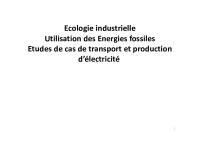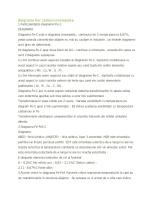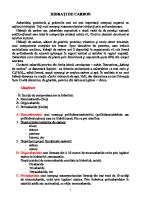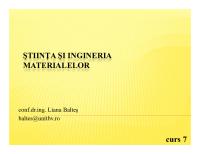ASTMD3838-05 (2017) Standard-pH of Activated Carbon [PDF]
This international standard was developed in accordance with internationally recognized principles on standardization es
26 0 76KB
Papiere empfehlen
![ASTMD3838-05 (2017) Standard-pH of Activated Carbon [PDF]](https://vdoc.tips/img/200x200/astmd3838-05-2017-standard-ph-of-activated-carbon.jpg)
- Author / Uploaded
- Aditya Putri
Datei wird geladen, bitte warten...
Zitiervorschau
This international standard was developed in accordance with internationally recognized principles on standardization established in the Decision on Principles for the Development of International Standards, Guides and Recommendations issued by the World Trade Organization Technical Barriers to Trade (TBT) Committee.
Designation: D3838 − 05 (Reapproved 2017)
Standard Test Method for
pH of Activated Carbon1 This standard is issued under the fixed designation D3838; the number immediately following the designation indicates the year of original adoption or, in the case of revision, the year of last revision. A number in parentheses indicates the year of last reapproval. A superscript epsilon (´) indicates an editorial change since the last revision or reapproval.
1. Scope
carbon may be a significant parameter of such a reaction and therefore may be an important characteristic of the carbon.
1.1 This test method covers determination of the pH of a water extract of activated carbon.
5. Apparatus and Materials
1.2 The values stated in SI units are to be regarded as standard. No other units of measurement are included in this standard. 1.3 This standard does not purport to address all of the safety concerns, if any, associated with its use. It is the responsibility of the user of this standard to establish appropriate safety and health practices and determine the applicability of regulatory limitations prior to use. For specific hazard statements, see Section 6.
5.1 Analytical Balance, capacity 100 g, precision 6 0.01 g. 5.2 Hot Plate. 5.3 Glassware for Boiler-Reflux Condenser Apparatus (Fig. 1)—Items shown are for guidance only, providing a convenient set of equipment available off-the-shelf from many laboratory supply houses. The “all-glass” elements, with standard-taper and ball joints, provide freedom from contamination and maintenance. A check valve in the position shown is essential to relieve pressure buildup while minimizing loss of vapor.
2. Referenced Documents
5.4 Thermometer, glass, approximately 0 to 120 °C, long enough to be read at 100 °C when inserted to bottom of Erlenmeyer flask in Fig. 1.
2.1 ASTM Standards:2 D1193 Specification for Reagent Water D1293 Test Methods for pH of Water D2867 Test Methods for Moisture in Activated Carbon D6851 Test Method for Determination of Contact pH with Activated Carbon E300 Practice for Sampling Industrial Chemicals
5.5 Thermometer, glass, approximately 20 to 55 °C. 5.6 Graduated Cylinder, 100-mL. 5.7 Beaker, 200-mL. 5.8 Filter Funnel.
3. Summary of Test Method
5.9 Filter Paper, qualitative, medium flow rate, 12.5 cm or larger in diameter.
3.1 An activated carbon sample is boiled in reagent water using a reflux condenser to recycle water vapor. The particles of carbon are filtered out, the filtrate cooled to 50 °C and the pH of the filtrate determined by electrometic measurement.
5.10 Timer. 5.11 pH Meter, in accordance with Test Methods D1293, Type II (automatic thermal compensation preferred).
4. Significance and Use
5.12 Reagent Water, in accordance with Specification D1193, Type II.
4.1 When a fluid containing an adsorbate is passed through a bed of activated carbon, chemical reactions may take place between the activated carbon, its other noncarbonaceous constituents, and the adsorbate-containing fluid. The pH of the
6. Hazards 6.1 The test method involves transfer of boiling water between containers; appropriate tongs or gloves should be used. In addition, the use of an electric hot plate and pH meter (if line-powered) poses a shock hazard. This equipment must be grounded and insulated in accordance with UL standards and electrical codes.
1 This test method is under the jurisdiction of ASTM Committee D28 on Activated Carbon and is the direct responsibility of Subcommittee D28.02 on Liquid Phase Evaluation. Current edition approved March 1, 2017. Published March 2017. Originally approved in 1980. Last previous edition approved in 2011 as D3838 – 05 (2011). DOI: 10.1520/D3838-05R17. 2 For referenced ASTM standards, visit the ASTM website, www.astm.org, or contact ASTM Customer Service at [email protected]. For Annual Book of ASTM Standards volume information, refer to the standard’s Document Summary page on the ASTM website.
7. Sampling 7.1 Guidance in sampling activated carbon is given in Practice E300.
Copyright © ASTM International, 100 Barr Harbor Drive, PO Box C700, West Conshohocken, PA 19428-2959. United States
1
D3838 − 05 (2017) with the distilled water used for the test. Catch the filtrate in a 500-mL vacuum filter flask, being careful to prevent carbonfines from overrunning into the flask. 9.7 Cool the filtrate to 50 6 5 °C. 9.8 Measure pH as described in Test Methods D1293. 10. Calculation 10.1 If the pH meter is calibrated in pH units, read value from pH meter. If the meter reading is in voltage units, use the equation from the Terminology section of Test Methods D1293. 11. Report 11.1 Report the following information: 11.1.1 Source of sample, 11.1.2 Type or designation of activated carbon, 11.1.3 Supplier name, 11.1.4 Supplier grade designation, 11.1.5 Supplier lot and batch number, 11.1.6 Moisture content in accordance with Test Methods D2867, 11.1.7 pH to the nearest 0.1 unit, 11.1.8 Temperature of measurement to the nearest 1 °C, 11.1.9 Date of test, 11.1.10 Name and signature of technician performing test, and 11.1.11 Name and signature of supervisor approving test.
FIG. 1 Boiler-Reflux Condenser Apparatus
12. Precision and Bias 12.1 An interlaboratory comparison of the pH of four types of activated carbons using essentially the above procedure was carried out by four laboratories (see Test Method D6851). The results were as follows:
8. Calibration and Standardization 8.1 Use the procedure of Test Methods D1293 to standardize the pH meter. 9. Procedure
Sample 2N 11N 12N 1D 4D 9D 3B 5B 10B 6P 7P 8P
9.1 Determine the moisture content of the carbon in accordance with Test Methods D2867. Calculate the weight of moist carbon equivalent to 10 g on a dry basis. 9.2 Weigh out a sample of carbon equivalent to 10.00 6 0.01 g on a dry basis. Remove boiler flask from apparatus and add carbon sample. 9.3 Bring approximately 110 mL of reagent water to a gentle boil. Measure 100.0 6 0.1 mL in graduated cylinder while water is hot. Immediately add this water to the carbon in the flask. Reconnect joints to flask seated on hot plate.
Number of Tests 11 12 11 11 12 12 11 12 12 11 12 12
Average pH 3.65 3.64 3.56 5.57 5.62 5.65 8.82 8.93 8.90 7.91 8.07 7.85
Standard Deviation 0.18 0.19 0.14 0.67 0.60 0.60 0.38 0.30 0.29 0.17 0.41 0.23
12.2 The measured pH values are in agreement with the activated carbon types (N, wood-base; D, lignite; B and P, bone-char). The standard deviations also appear in agreement with other work, in that they are higher for neutral conditions (near pH 7) than for strongly acidic or basic conditions. Some of the observed variation is in the samples themselves. A standard deviation of 0.6 for pH values near 7 and 0.3 for values at the ends of the pH scale appears readily achievable by this test method.
9.4 Bring water in flask to a boil, using thermometer reading to assure that no false boiling, due to gases trapped in carbon, occurs. 9.5 Boil gently for 900 6 10 s. 9.6 Remove the flask from the hot plate and filter its contents immediately through the filter paper premoistened
2









